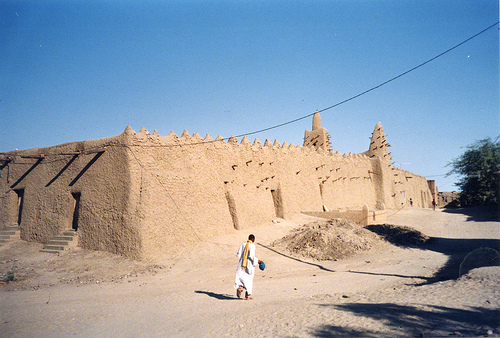Timbuktu is just that place way over there. Where? Somewhere far away.
- Timbuktu is a city located on the sands of the Sahara Desert in Mali, north-west Africa, and in 2009, it had a population of nearly 54,500 individuals.
- ‘Tombouctou’ is the French spelling for ‘Timbuktu’, and other spellings have included ‘Timbuktoo’ and ‘Timbuctoo’, and due to the mythical and mysterious way it has been portrayed in literature, many people do not believe the place exists.
- Timbuktu is a place of cultural and spiritual significance, as it was a popular trading centre for ivory, gold, salt and slaves, as well as a major hub for Islam and education in its peak during the 1400s and 1500s, and during that time it had about 100,000 inhabitants, a quarter of which were students.
- The UNESCO World Heritage Convention designated Timbuktu as a World Heritage Site in 1988 after originally being turned down in 1979, and it has been on the List of World Heritage in Danger more than once.
- Evidence of groups of people living in the area of Timbuktu around 400 BC have been discovered, and people settling more permanently in the area was likely to be around the 1100s.
Part of Timbuktu
Image courtesy of Jeanne Menj/Flickr
- Timbuktu has been captured and lived in by a variety of people groups, including the Mali from the early 1300s to 1400s, the Songhai from the late 1400s to late 1500s, and the Arma from the early 1600s to 1800s.
- The French discovered and subsequently conquered Timbuktu in 1893, known primarily as ‘French Sudan’, during the small French invasion, and the city later became independent as part of the Mali community in 1960.
- Timbuktu is constantly hammered by both extremes of disasters – droughts and floods, which, in combination with other events, has led to the city’s poor nature.
- Due to Timbuktu’s heritage, it is home to historically important mosques and mausoleums, as well as between 100,000 and 700,000 historic manuscripts.
- Visitor numbers to Timbuktu have decreased over the years due to a number of terrorist attacks on tourists there in recent times, and the city, including some of its significant monuments have been under threat or destroyed due to religious attacks in the area.
Bibliography:
Timbuktu, 2015, UNESCO World Heritage Convention, http://whc.unesco.org/en/list/119
Timbuktu, 2015, Wikipedia, https://en.wikipedia.org/wiki/Timbuktu








This is wonderful!
It is beautifully uniquely plain wonderful!
Thanks for posting this so MUCH!!
😀😀